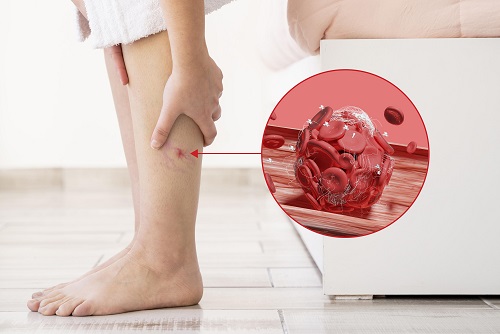Understanding Hyperpigmentation on Legs
Hyperpigmentation, also sometimes referred to as skin discoloration, is a prevalent skin condition characterized by the darkening of certain areas due to an excess production of melanin. While it can occur on any part of the body, hyperpigmentation on the legs is a common concern for many.
Hyperpigmentation occurs when there is an overproduction of melanin, the pigment responsible for skin, hair, and eye color. When you have skin discoloration on the legs, it can sometimes look like small spots or patches, but sometimes it is an overall darkening of the skin.
Causes and Contributing Factors of Leg Hyperpigmentation
Several factors contribute to hyperpigmentation, ranging from sun exposure and inflammation to hormonal changes and genetics. Sun exposure is a very common cause, as prolonged exposure to ultraviolet (UV) rays can stimulate melanin production and result in hyperpigmentation, also called sun spots. Skin trauma, such as cuts, acne, or other injuries is also hyperpigmentation caused because of inflammation.
Hormonal changes, such as natural fluctuations, pregnancy, and birth control pills, influence melanin production, which can cause dark spots. This is also sometimes referred to as Melasma, which is a condition where brown patches appear on the cheeks, forehead, nose, and/or chin. It is most common in pregnant women, and many times it goes away on its own after pregnancy. Genetics can also play a role in causing hyperpigmentation.
Many people suspect that poor blood circulation could be a risk factor, but it is not a direct cause. It can worsen the condition, however, by delaying the skin’s natural healing processes. Having poor blood circulation can contribute to the severity of the discoloration condition of the skin. Inadequate blood flow can negatively affect the skin’s ability to heal and regenerate, increasing the appearance of dark spots or patches. Individuals with circulatory issues may find that hyperpigmentation takes longer to fade or that new discolorations appear more frequently.
Thankfully, several hyperpigmentation treatment options can help address the condition. Over-the-counter creams containing ingredients like hydroquinone, retinoids, or vitamin C can help fade dark spots.
There are also skincare treatments such as chemical peels that use acids to exfoliate the top layer of skin, which can be an effective hyperpigmentation on the legs treatment. Another skincare option is laser treatment, which can target melanin, breaking down dark spots and promoting collagen production. Cryotherapy hyperpigmentation leg treatment uses cold temperatures to treat dark spots by freezing the pigmented skin.
How to Get Rid of Hyperpigmentation on Legs?
Proper diagnosis of the underlying cause can help you select the appropriate treatment for dark spots on legs or hyperpigmentation legs treatment. If you are wondering how to get rid of hyperpigmentation on legs or prevent it from happening, these are the best skincare tips:
1. Sun Protection: Always make sure to wear an SPF of at least 30 when you are out in the sun for long periods. You can double your protection from the sun by also wearing clothing with SPF, sunglasses, and hats.
2. Avoid Scratching: Resist the urge to scratch bug bites or other irritations to prevent inflammation.
3. Maintain Healthy Circulation: Regular exercise, elevating your legs, and avoiding prolonged periods of sitting or standing can promote better blood circulation. If you have a family history of poor blood circulation, compression stockings or socks can be incredibly helpful in getting blood flow moving.
4. Stay Hydrated: Proper hydration supports overall skin health and may help prevent hyperpigmentation.
Preventive Measures and Skincare Tips for Leg Hyperpigmentation
While poor blood circulation isn’t a direct cause of hyperpigmentation on the legs, it can contribute to the condition’s persistence. Understanding the causes and available treatments is crucial for managing hyperpigmentation effectively. Whether you’re considering professional dark spot treatment Miami like laser therapy or chemical peels, or incorporating topical creams into your skincare routine, a proactive approach can help you achieve clearer, healthier skin on your legs. Remember, prevention plays a vital role, so protect your skin from the sun and maintain overall skin health to reduce the risk of hyperpigmentation.
If hyperpigmentation is affecting your life, schedule a consultation at Fox Vein & Laser Experts so our team can determine the best treatment plan for your skin condition and goals. Call our office at 954-627-1045 or use our easy, convenient online booking tool.
FAQs
1. What is hyperpigmentation on the legs?
Hyperpigmentation refers to darkened patches on the skin caused by excess melanin production.
2. Can poor blood circulation cause hyperpigmentation in the legs?
Yes, it’s possible. Poor blood circulation may lead to a condition called stasis dermatitis, causing skin discoloration due to inadequate blood flow.
3. How does poor circulation contribute to hyperpigmentation?
Insufficient blood flow can result in the pooling of blood in the legs, leading to skin changes, such as discoloration, especially around the ankles.
4. What are other causes of leg hyperpigmentation?
Besides poor circulation, causes may include sun exposure, inflammation, certain medications, and underlying health conditions like venous insufficiency.
5. How is hyperpigmentation due to poor circulation treated?
Treatment often involves improving blood flow through lifestyle changes (exercise, elevation), compression stockings, and addressing underlying circulatory issues.
6. Can varicose veins cause leg hyperpigmentation?
Varicose veins, associated with poor circulation, might cause skin discoloration, but they’re not the exclusive factor in leg hyperpigmentation.
7. When should one seek medical advice for leg hyperpigmentation?
If you notice sudden or severe changes in skin color, or dark spots on legs, accompanied by pain, swelling, or other concerning symptoms, consulting a healthcare professional is advisable. Always consult a Fox Vein & Laser Expert for accurate diagnosis and tailored treatment options.

